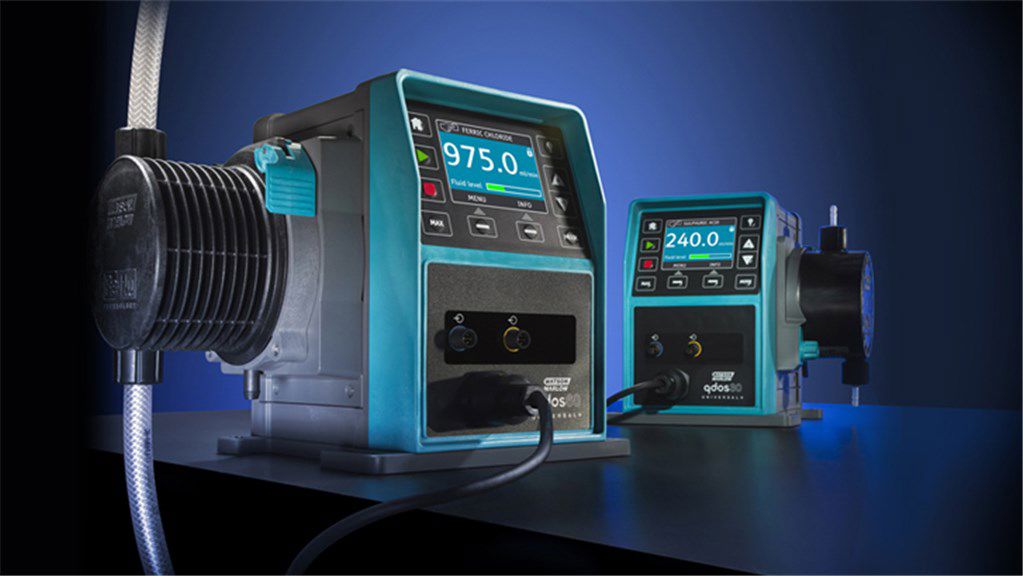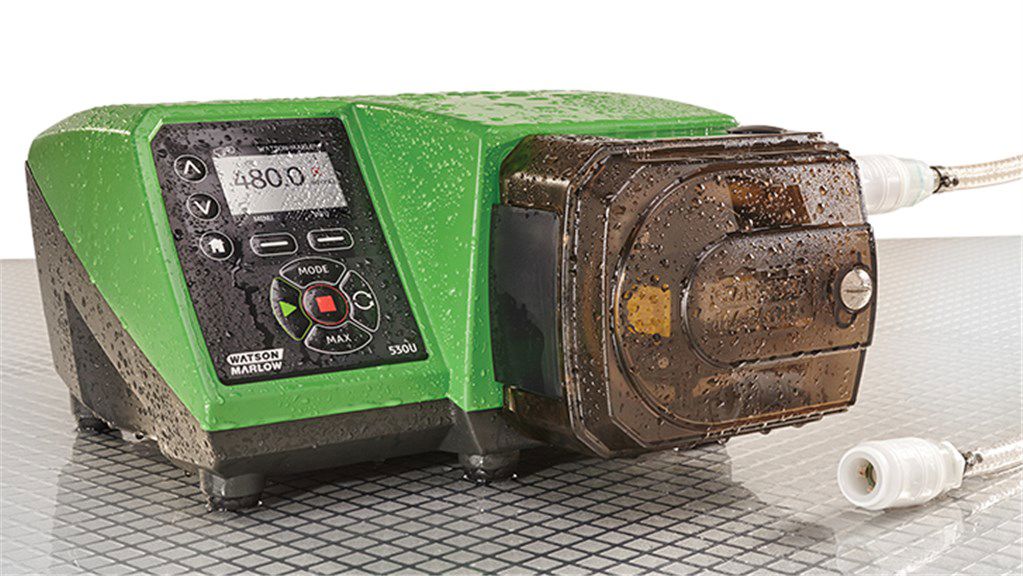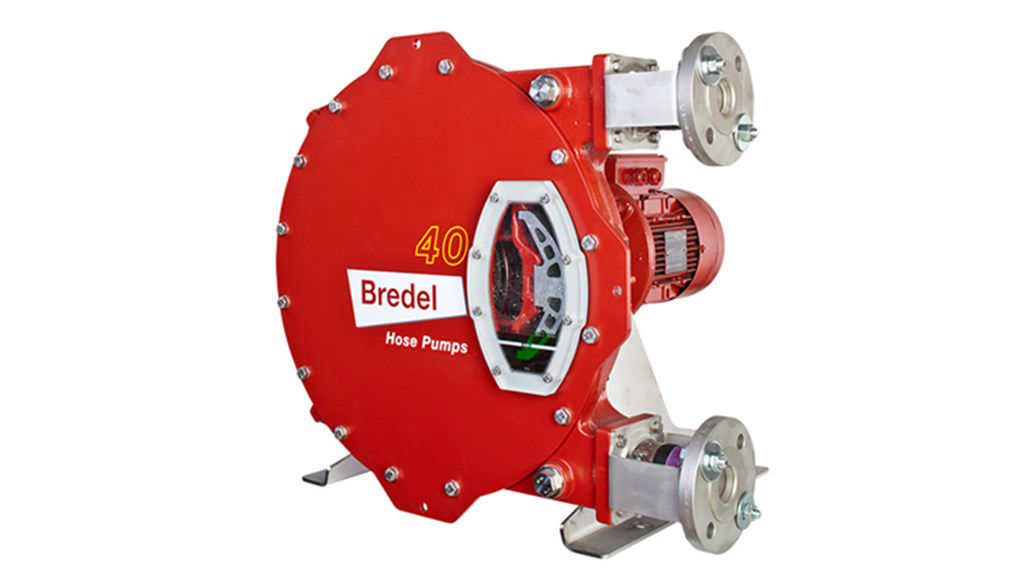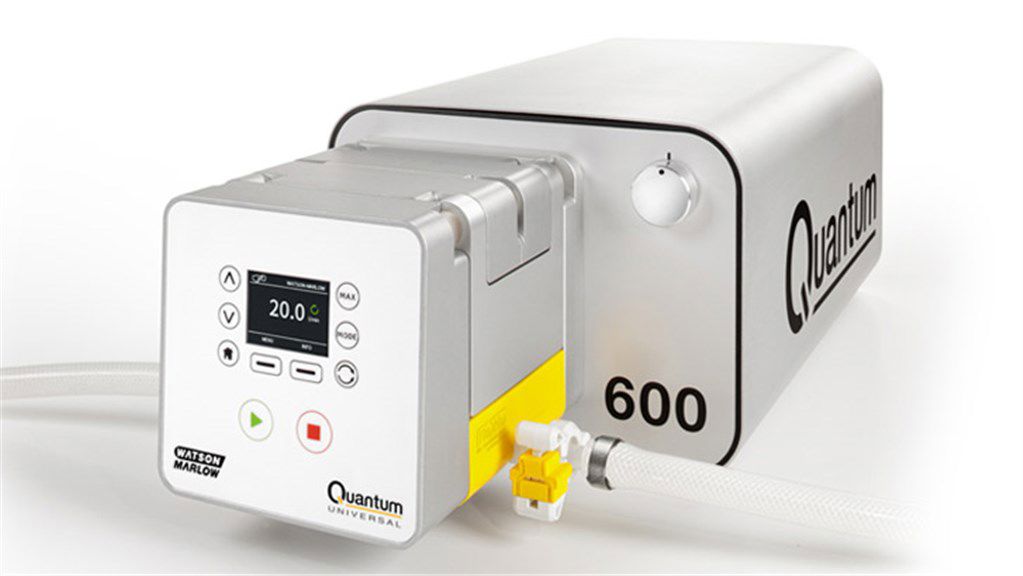Peristaltic pumps - how do they work?
Learn more about the benefits of switching to a Watson-Marlow peristaltic pump
Call +1 800 282 8823
Learn more about the benefits of switching to a Watson-Marlow peristaltic pump
Peristaltic pumps, or tube pumps are a type of positive displacement pump. The pumps use the principle of peristalsis as the basis for their design. Peristalsis, in a biological sense, is a series of muscle contractions that moves food to different parts along the digestive system.
Rollers or shoes in a peristaltic pump compress the tube or hose as they rotate, creating a vacuum which draws fluid through the tube.
Nothing but the pump tube or hose touches the fluid, eliminating the risk of the pump contaminating the fluid, or the fluid contaminating the pump. The animation shows fluid being drawn into a pump tube, trapped by the pumphead roller, and expelled when the next roller passes over the tube. As the rollers rotate, a vacuum is formed in the tube, pulling in more fluid, for the next roller pass.
The complete closure of the tube when is it occluded (squeezed) between the roller and the track, gives the pump its positive displacement action, preventing backflow and eliminating the need for check-valves when the pump is not running.
The main advantage of peristaltic pumps is that nothing but the tube touches the fluid. Because only the inner bore of the tube touches the fluid, they eliminate the risk of the pump contaminating the fluid, or the fluid contaminating the pump.
The animation shows fluid being drawn into a pump tube, trapped by the pumphead roller, and expelled when the next roller passes over the tube. As the rollers rotate, a vacuum is formed in the tube, pulling in more fluid, for the next roller pass.
The complete closure of the tube when is it occluded (squeezed) between the roller and the track, gives the pump its positive displacement action, preventing backflow and eliminating the need for check-valves when the pump is not running.
Flow rates to 2,000 ml/min (31.7 USGPH) and pressures up to 9 bar (130 psi).
Pumps - cased pumps
Flow rates to 55 GPH (3.5 L/min) and pressures up to 100 psi. Precise 2200:1 speed control range.
Pumps - cased pumps
Flow rates to 4623 GPH (17520 L/hr) and pressures up to 232 psi. Eliminate ancillary equipment.
Pumps - hose pumps
Flow rates from 5.33 ml/min to 20 L/min (virtually pulsation free). Precise 4000:1 speed control range.
Pumps - cased pumps
Ease of operation comes from simple tube loading.
In applications where a disposable tube set is required, the tube must be replaced once per procedure, which could occur several times each day depending upon your specific process or application. It is critical that tube changeover is done correctly to avoid compromising pump performance.
For example, Watson-Marlow LoadSure technology offers snap-fit one minute maintenance.
A peristaltic pump requires no valves in its operation because at least one roller is always compressing the tube against the track, preventing backflow or siphoning when the pump stops.
Because peristaltic pumps are positive displacement pumps moving a fixed volume for each revolution, flow rates are linearly proportional to speed over the pumps recommended speed range.
When calibrated to account for system losses, a peristaltic pump can achieve metering and dosing accuracy of ±0.5%.
For example, delivering flow rates that remain constant right up to 7 bar Qdos peristaltic chemical metering pumps give users a unique advantage over diaphragm metering pumps.
Peristaltic pumps need no priming and can run dry without damage.
For example, our Bredel peristaltic hose pumps are dry running and self-priming with no ancillary equipment, check valves, sealing water flush systems or run-dry protection required.
With most positive displacement pumps that deliver a fixed volume per pump stroke or revolution, pulsation or pressure drop can be observed.
For example, our Quantum single-use pumps deliver flow linearity throughout the 3 bar single-use processing pressure range up to 20 L/min, leading the market with virtually no pulsation.
With a peristaltic pump, the only wetted part is the tubing. In sanitary medical applications, the pump will not contaminate a sterile fluid in the tube, and the pump will not require cleaning. In most medical applications, the tube is the part of a disposable tube-set that is connected to other components such as a catheter.
As a total solution provider, did you know we also supply solutions to help complete your fluid path including our BioPure fluid path components and Aflex PTFE hoses.
View our peristaltic pumps which require no valves, seals or glands
Precision tubing for pumping and other purposes, in a range of materials
View our range of Bredel hose pumps.
View our BioPure fluid path components.
Learn more about our flexible PTFE-lined hoses from Aflex Hose
View our Flexicon aseptic liquid filling range.
View ASEPCO high purity valves.
Gentle sinusoidal pumps for food, chemical and cosmetics applications
To order a product or ask a question call +1 800 282 8823 or












